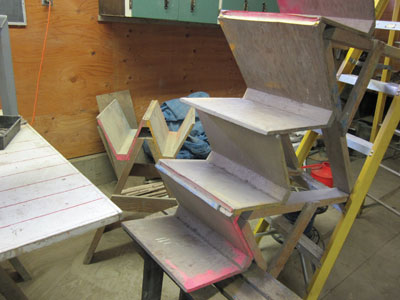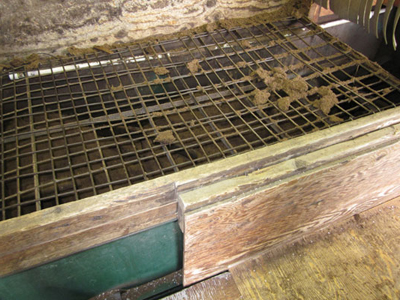
To err is human… we have all heard this statement. It is the truth!
To err is human… we have all heard this statement. It is the truth!
 |
|
| Colour coding is a great detection device. Advertisement
|
The problem is that in your greenhouse, this costs you money. In the Lean world of process improvement, we use the Japanese term “muda” for waste, which is what’s caused by a mistake in our processes. The way we try to prevent these errors is by using something called a “poka-yoke” [poh-kah-yoh-keh], or mistake-proofing device.
Poka-yoke was developed by Shigeo Shingo in a Toyota car factory in the 1960s. The term comes from two Japanese words, “poke” (inadvertent mistake) and “yoke” (prevent). Basically, it is any mechanism that either prevents a mistake from being made or makes the mistake obvious at a glance. It is aimed at eliminating defects in a product by preventing or correcting mistakes as early as possible in the production process.
UNDERSTANDING THE DIFFERENCE BETWEEN A MISTAKE AND A DEFECT
We also must understand the difference between a mistake and a defect.
- A mistake is when we catch something that does not meet specification within our process – fix or remove it, and then continue.
- A defect is when we don’t catch a mistake and it gets passed on to the customer. A customer may be the next process in the line, or the end user or purchaser. The goal of any poka yoke is to prevent defects from reaching the customer.
- There are two types of poka-yokes – “detection” and “prevention.”
- Prevention: makes it almost impossible to make a mistake at all, i.e., a key will only fit into a lock one way.
- Detection: signals the user when a mistake has been or is going to be made, i.e., your computer will ask if you want to delete a file… but will not prevent you from deleting it.
- There are many opportunities for mistakes to happen on your farms. The grading process is subjective, as is the weeding. What is good? What matches quality? Are the pots filled to the proper level for seeding, and are the trays placed properly? Are there enough seeds in the crates?
BUILDING WORKPLACE MINDSET OF CATCHING MISTAKES EARLY
All of these issues can be alleviated by implementing a poka-yoke strategy and building a mindset within your organization of catching mistakes before they can be passed on.
Colour coding is a great detection device. As humans, we react to colour quite easily and as such can quickly change our behaviours as colour coding is put into place. If we colour something red, that usually means “bad” or “stop”; if we use green, that signals “good.”
The only limitation is they need to be consistently solid, differentiating colours. We don’t use different shades of green because that takes away from the quick reaction we have when looking at “green” versus “red.”
 |
|
| A steel grid can be an effective prevention device.
|
PREVENTION DEVICES ARE HARDER TO IMPLEMENT
Prevention devices are harder to implement and are used when we have a process during which it may be difficult to detect a mistake, that is high risk, or that is automated. These might be proximity switches that shut down the line if a pot does not have enough – or has too much – soil, or it could be a simple grid over the soil mixer preventing large objects from getting in and jamming the machine.
The key characteristics of a good poka-yoke are:
- It is simple and cheap. If it is too complicated or expensive, its use will not be cost-effective.
- It is part of the process, implementing what Shingo calls “100 per cent” inspection.
- It is placed close to where mistakes occur, providing quick feedback to workers so mistakes can be corrected.
LEARNING FROM MISTAKES PART OF IMPROVEMENT PROCESS
Noted business efficiency specialist John Powell wrote that, “the only real mistake is the one from which we learn nothing.” Mistakes cost us time and resources, and that means money. Look at the mistakes and defects that are happening in your facility as opportunities to get better. For every identified mistake there is a solution. Use your staff to find that solution using the three characteristics of a good poka-yoke and increase your bottom line.
Until next month, keep improving.
Dale Schattenkirk is president/CEO of LTS Consulting, a certified Lean Six Sigma Black Belt, an ISO Auditor and a Certified Human Resources Professional (CHRP).
• www.ltsee.com
Print this page